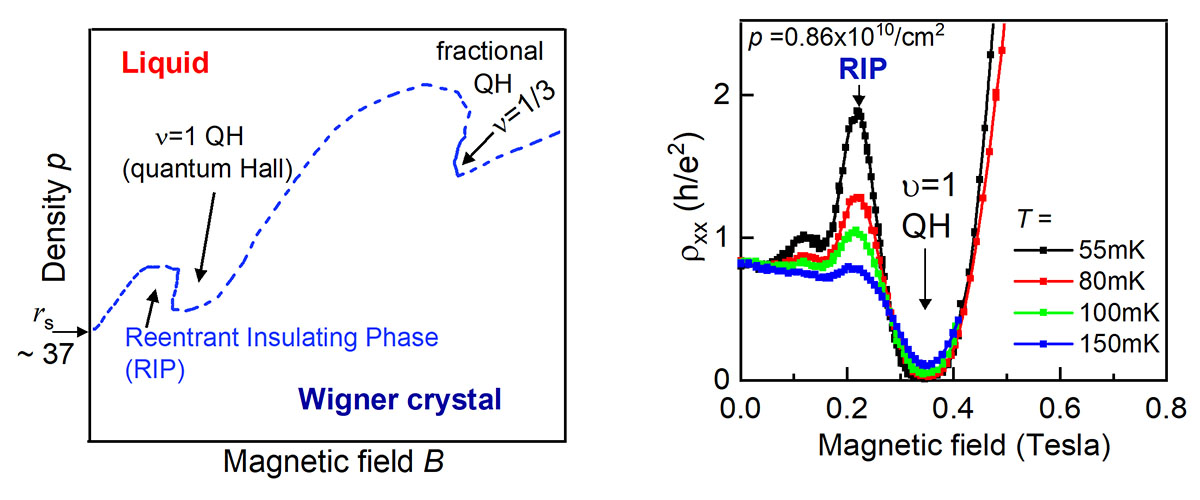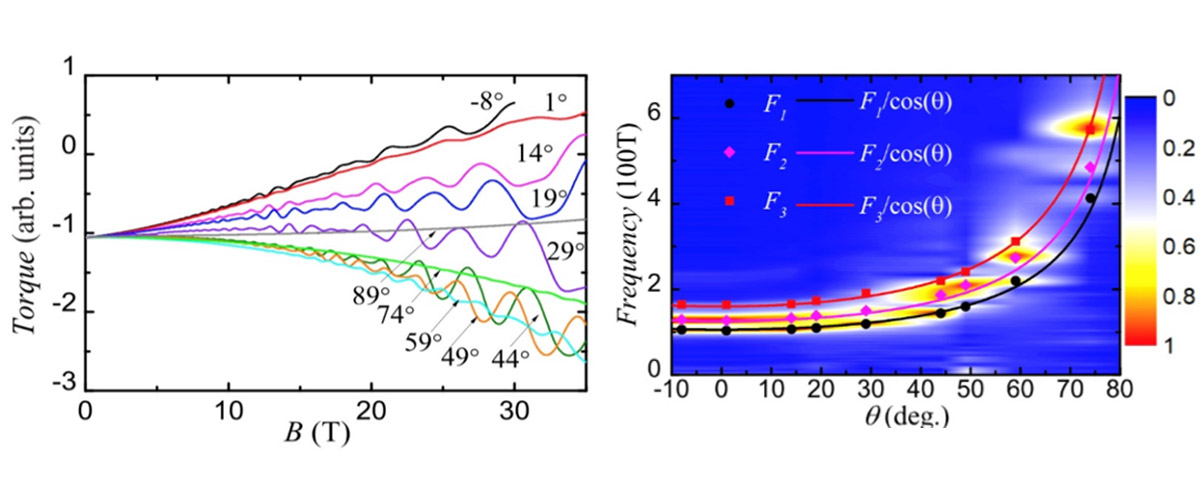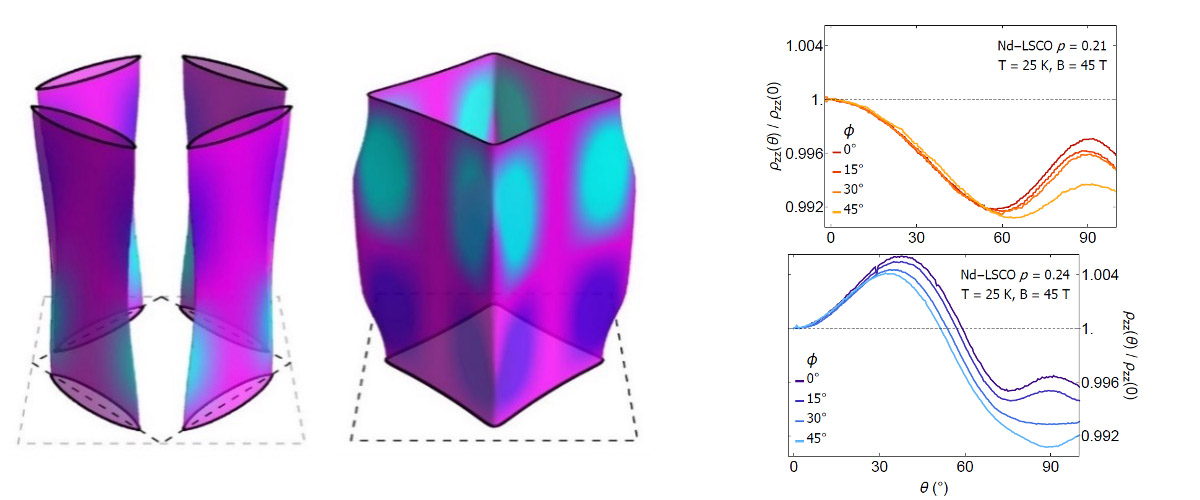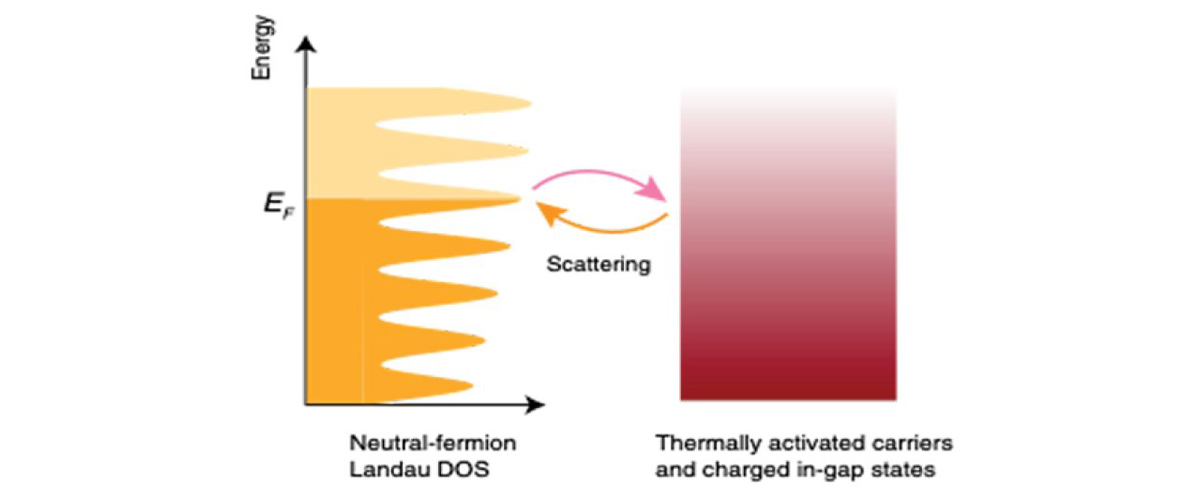What did scientists discover?
Charged carriers (negatively charged electrons or positively charged “holes”) confined to move in only two dimensions (2D) within a semiconductor structure can interact with each other to form a variety of phases when the carrier density, temperature, or an applied magnetic field is tuned. In this work, MagLab users found evidence for the emergence of a crystal phase inside the liquid phase of 2D hole carriers and, furthermore, discovered that polarizing the carriers’ spin promotes the crystal formation.
Why is this important?
Two-dimensional semiconductor electronic devices find applications in high-speed electronics. They also provide an nearly ideal platform for settling scientific questions about electronic correlations that are of fundamental interest and of relevance to other materials with novel electronic or magnetic properties.
Who did the research?
R. L.J. Qiu, C.W. Liu, X. P.A. Gao1, A. J. Woods, A. Serafin, J.S. Xia2, L.N. Pfeiffer, K.W. West3
1Case Western Reserve University ; 2National MagLab; 3Princeton University
Why did they need the MagLab?
High-quality 2D electron and hole systems are incredibly susceptible to deleterious impact of electromagnetic interference. The ultra-low-noise environment of the MagLab’s High B/T facility provides a unique opportunity to investigate the electrical transport behavior of the 2D hole system at low temperatures, subject to tunable perpendicular and parallel magnetic fields by rotating the sample in the magnetic field. Sample rotation enables separate control of the interactions between carriers and their spin polarization, important to understand the origin of the Wigner crystal phase transition.
Details for scientists
- View or download the expert-level Science Highlight, Incipient Formation of Wigner Crystal in Strongly Interacting 2D Holes
- Read the full-length publication, Incipient Formation of the Reentrant Insulating Phase in a Dilute 2D Hole System with Strong Interactions
Funding
This research was funded by the following grants: G.S. Boebinger (NSF DMR-1644779); X.P.A. Gao (NSF DMR-1607631); L.N. Pfeiffer (NSF DMR-0819860)
For more information, contact Mark Meisel.






